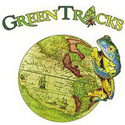Sani Lodge Pt.4 – The Reptiles
I saw many Enyalioides laticeps sleeping in trees and bushes on this trip. I left them alone as I’ve shot them before. I did decide to pick up a sleeping Plica plica (taxonomy may have changed – I don’t follow lizard changes so closely) one night for a little session. Lizards are tough to make interesting, especially this group, the Tropidurids. They just sit there in a straight line so compositionally are boring. But here he is anyway. Of course the lens was cool and I was shooting midday so it started to fog up inside. I guess I got the benefit of the low contrast glamour look for free. Post processing was required to try to salvage the shots.
About the only way to make Tropidurids interesting is to shoot a profile. Here Plica plica poses for a simple image.
The skink, Mabuya nigropunctata, required less effort to catch and granted a chance to show off. We were having lunch when it scurried across the dining room floor in front of the other guests and staff. I got up and stalked it when it took off. A diving catch provided more show than substance, but hey, the reptiles usually make me look silly so I’ll take this lizard glory. Of course, its revenge was that it was not going to get its picture taken. It constantly dipped its head and refused to look at the camera. I gave up after 15 minutes and a few useless frames.
A common litter skink, Mabuya nigropunctata, refuses his photographic moment of glory.
I needed to show off because a couple days prior I was greeted by Javier who had just returned with a couple guests late one afternoon. Javier told me that on their way out in the morning he saw a large snake sleeping coiled in a tree overhanging the canal between the lagoon and the Napo river. On their way back the snake was still there. He said it must have shed its skin because now the belly, which was whiteish, was now yellow. That didn’t sound right to me but he offered to take me to it. Looking at a snapshot the guests took I could see that the snake was a bird-eating snake, Pseustes poecilonotus. He said it was just a couple meters above the water. The guests asked if they could come along and watch the apparent spectacle. Sure, but I warned them that snake catching never was this easy and that something would likely go wrong. 20 mintues later, we were approaching the tree and I could clearly see the snake coiled in some branches over the water – even from 25m away. But it was not 2 meters up. I had to straddle the sides of the shaky canoe (I was convinced I was going to fall), while the paddler kept it steady against the current, and reach up with my snake hook. And even then I was a couple inches short. If I got on my tip-toes(!) I could reach but I knew I only had one shot. If the snake held or took off I couldn’t get it. While trying to formulate a contingency plan the snake became aware of me and started to crawl towards shore. So I hooked but the 2+m long snake held and took off. I looked for the snake and saw that it was now coiled 2 meters closer towards shore. That didn’t make sense. Fleeing snakes won’t coil like that. And why was this snake’s belly now white? And why was it much bigger? Oh crap, another snake. That explains Javier’s color confusion. Here was a vey large, maybe 3m, Clelia clelia (mussarana) resting next to the Pseustes. Strange, because Clelia eat other snakes. So I tried to grab the Clelia and it shot like a missile through the tree, towards shore, and into the forest. Gone in seconds. So I resumed the hunt for the Pseustes by jumping towards shore and up the steep bank. Javier helped as well as another boatman. I was thrashing around the thick tree undergrowth thinking this is perfect fer-de-lance habitat and I’m in sandals. For 15 minutes the three of us chased the snake back and forth through the tree before it dropped into the water, swam back towards shore where we couldn’t get to, and up and into the forest. We lost both snakes. I told the other guests, that is what I meant by things are never as easy as they seem in catching snakes.
A couple nights later I was out hiking (alone as usual). After being out for near four hours and mostly skunked I was just 75 meters from camp when I spotted a bright red snake on a crawling on a tree root – it was a juvenile Clelia. The adults are a charcoal gray/black with white bellies. The babies/juveniles are bright red with a black neck and snout and bright white cap. The snake didn’t cooperate so well but I got some representative shots of my first juvenile Clelia.
Juvenile Clelia clelia are bright red while the adults become near black.
The rainbow boa, Epicrates cenchria, was another capture by Javier. I thought it would be easy to shoot. The few I’ve had before (in times of much less photo skill) were pretty relaxed. This one would not sit still. My plans for it failed so I fell back on some simple flash shots around tree roots. I’m not excited by the results but they are better than what I had in my image library.







4 comments
Muscle strain and shake? What about pounding heart and hyperventilation when you’re eye tot eye with that guy!
A very interesting and enjoyable post, Tim, and some really fine photos!
I am really sorry to have to say it, but the “Bothriopsis taeniata” is actually a juvenile Bothrops atrox. Juveniles have a very different and more lichenous-looking pattern that adults, so it’s an easy mistake to make.
Wolfgang, I knew it was going to be an atrox. Admittedly I have more experience with B. asper than B. atrox and this is the youngest I’ve caught (I know juvies are not X patterned). I convinced myself it was a bothriopsis based on the speckled venter and the really upturned snout (not just pointed). That and I’ve seen many a Bothrops and no Bothriopsis. I guess I should say thanks for the ‘bad’ news.